“Renaturing cities and gaining quality space for citizens is no longer just an interesting idea, it is a necessity,” says Jordi Fernández, one of the two founding partners of ON-A Architecture. This smart office based in Barcelona has specialized in renaturation and bioconstruction, conceiving in its 15 years of experience different ways of adapting green spaces in urban contexts, such as the proposed redevelopment of the Llano Amarillo Park in Algeciras or the Taichung Gateway Park in Taiwan.
According to the WHO, cities should have a minimum of 9m2 of green area per inhabitant. Currently, Barcelona has just over 6m2.
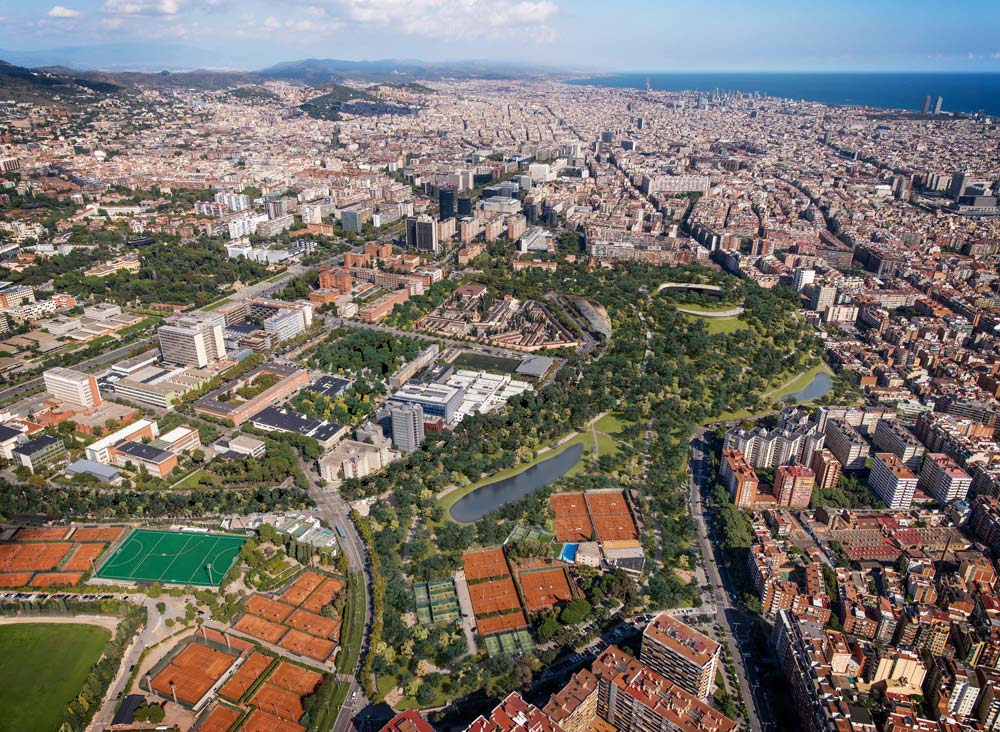
Aerial view of the Camp Nou renaturation proposal. Project by ON-A Architecture.
© ON-A
The ‘Nou Parc’ Proposal
‘Nou Parc’ is a project that encourages showing how cities can be renatured without losing building space; a win-win between the private and the public spheres. In Barcelona there are few available spaces where this is possible, but some options include the Camp Nou, La Sagrera, the Plaça de les Glòries project or the Front Marítim (seafront).
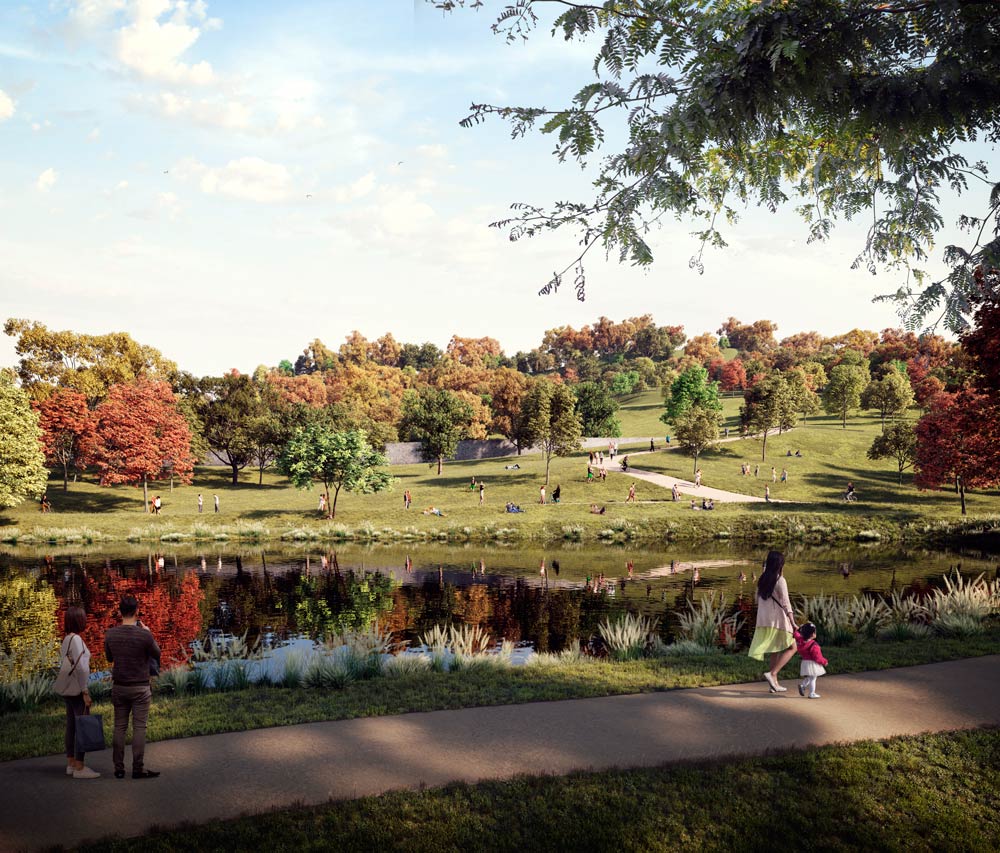
Detail of the new green space in the ‘Nou Parc’ proposal by ON-A Architecture.
© ON-A
In this case, the proposal suggests reforming one of the most significant locations in the city of Barcelona, the Camp Nou, elevating the topography and creating a blanket of green forest that would allow the facilities attached to the stadium and other amenities to be maintained below the surface of the new park. The resulting new topography would hide the services linked to the stadium (parking, offices, leisure spaces, restaurants, museum, multipurpose pavilion and entrances), and the stadium would function independently of the park.
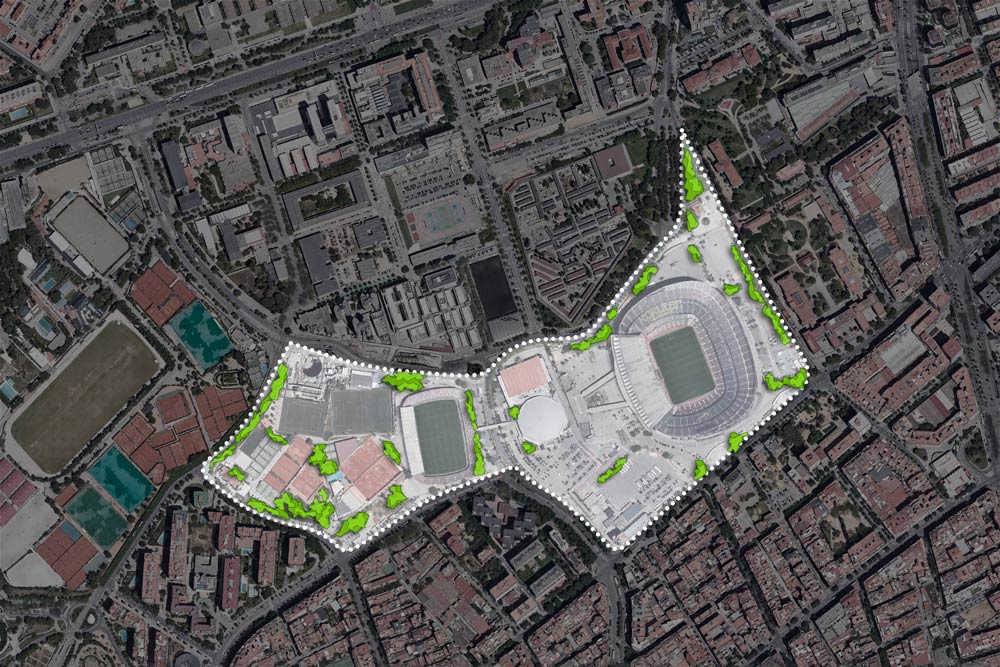

Before and after photographs showing the new 26-hectare green space proposed by ON-A Architecture to re-naturalize the Camp Nou area.
© ON-A
Currently, this fenced area with little greenery (building 32%, sports areas 10%, green areas 8%, hard pavement areas 50%) generates an “island” effect, separating the neighborhood of Les Corts from the university area (Zona Universitària). This huge space is regularly in disuse, except for sports events or organized visits to private facilities. Neighbors often experience the collapse caused by major sports events, so management is seen to be inefficient.
A rehabilitation of this magnitude and characteristics would be a great opportunity for the city of Barcelona, which would benefit from a new green and leisure space capable of connecting neighborhoods, removing boundaries, producing 15,000 kg of oxygen/day and absorbing 25,000 kg of C02/day.
Technology, an Ally in Urban Planning Progress
Technology becomes an ally in the process of renaturation. It can help us control and predict problems such as water supply and the maintenance of green areas. In this sense, ON-A works closely in collaboration with Verdtical, a company specialized in the development of systems and technology for the creation of urban ecosystems.
Using this advanced technology you can install green roofs, vertical gardens and provide technical solutions for the creation of forest cities, with elements controlled by intelligent systems through the IoT (Internet of Things). The organic environment is controlled by sensors and predictive protocols in artificial intelligence. The sensors collect information on the health status of green areas and act as prophylactic gatekeepers.
This technology is capable of minimizing water consumption, adapting to environmental needs. It also provides surveillance alerts and preventive action in maintenance, offering great savings in its actions. In this way, maximum efficiency is achieved in the conservation of green spaces in the ‘Nou Parc’ proposal.
“We are aware that cities must be re-naturalized, and that green provides unquestionable benefits for health, but the issue is not only green; the debate revolves around blue as well: water. We cannot be green if that implies an excessive use of resources. The technology for the control of water consumption has come a long way and allows us to innovate and optimize green areas in urban spaces. We have been advocating for these systems for years, but research in this sector should be further promoted,” adds Jordi.
In the case of the ‘Nou Parc’ proposal, ON-A imagines the possible use of the technology embedded in two lakes that would collect rainwater, relying on the topographic slope, which in turn could be reused for irrigation of the park.
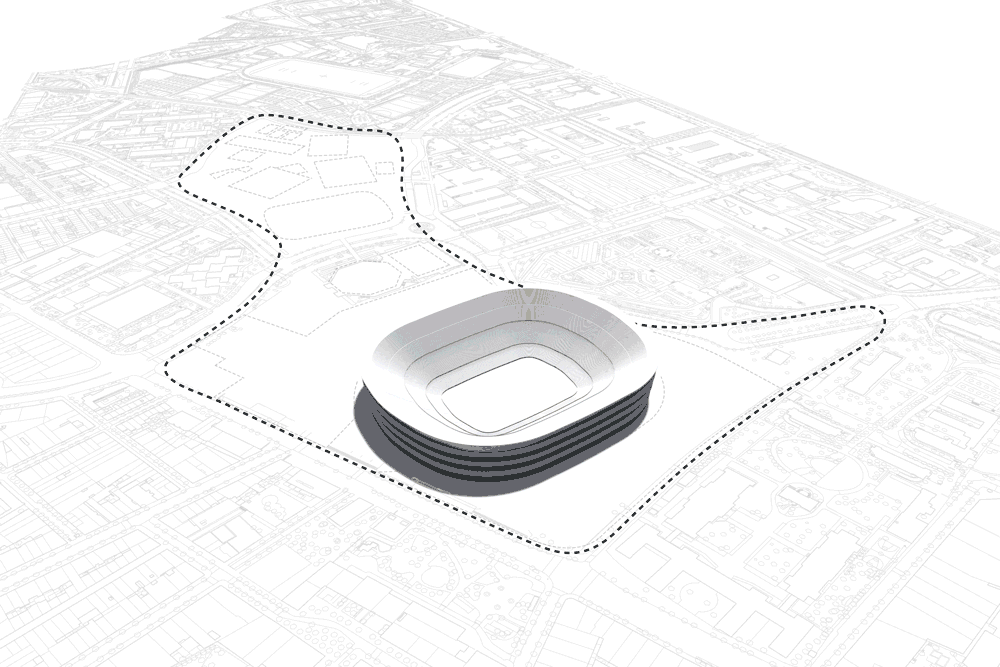
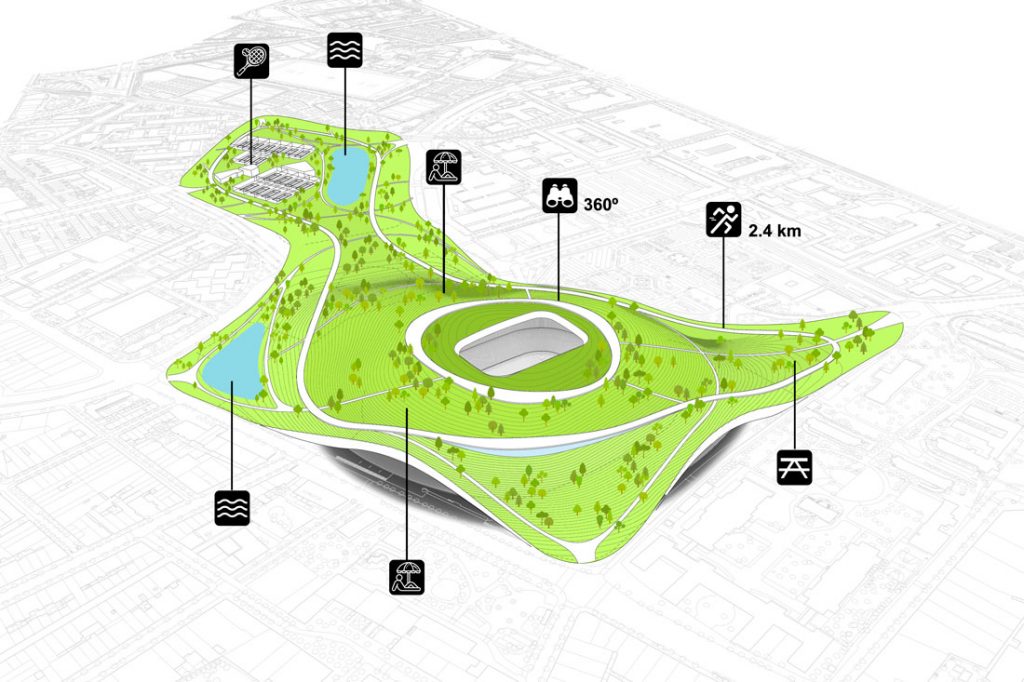
Proposal for the renaturation of the Camp Nou, graphic detail of the topography and new leisure, sports and nature areas.
© ON-A
Renaturalization of Cities in the World
The transition to the new post-pandemic normality in Spain and in the world will be accompanied by proposals that help to avoid the accumulation of people, recovering urban space that was formerly used for cars or private facilities. ON-A foresees that this recovery will be based on the creation of more green spaces, since they not only offer expanded public space but also help to clean the air and improve citizens’ quality of life. For example, with a 30% increase in green spaces, 400 premature deaths per year could be avoided, according to a recent study led by the Barcelona Institute for Global Health (ISGlobal) and published in The Lancet.
The idea of merging the public and private spheres to gain green space has already been applied in other international examples.
The same topography suggested in the ‘Nou Parc’ project can be seen in some proposals that were presented for the creation of the Olympic Stadium for the Tokyo 2020 Olympic Games. This is the case of DGT Architects or the proposal by GMP Architekten. In both cases, the stadium is covered with a green cloak that is accessible to people. Another similar example is the proposal for Craterre-Montpellier Arena by Arch. Giovanni Vaccarini.











